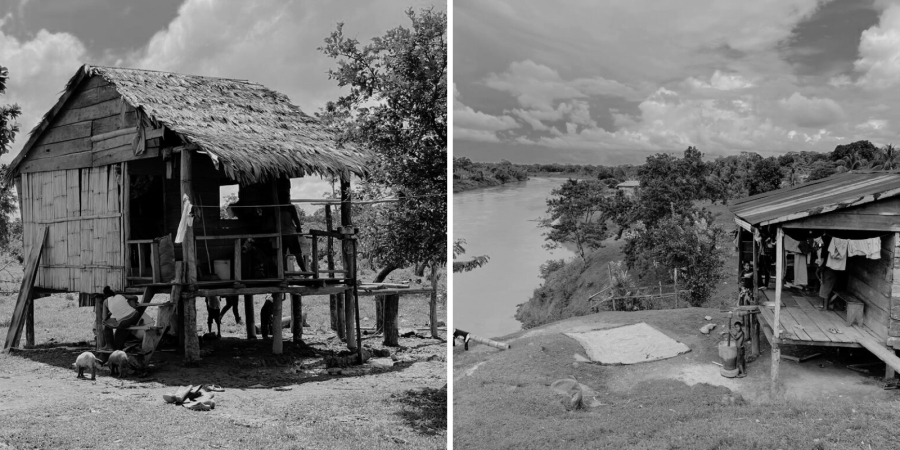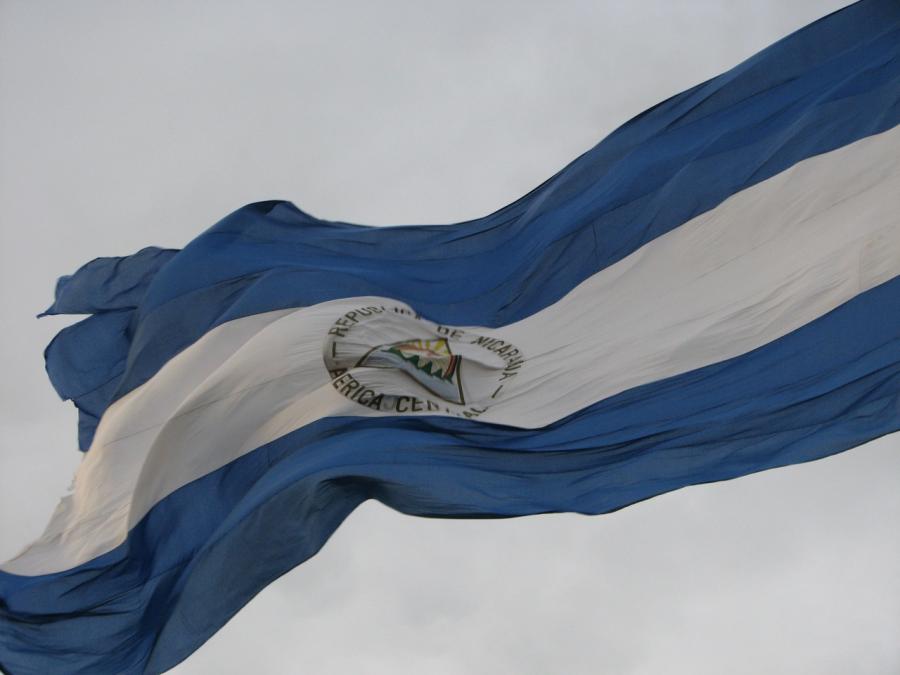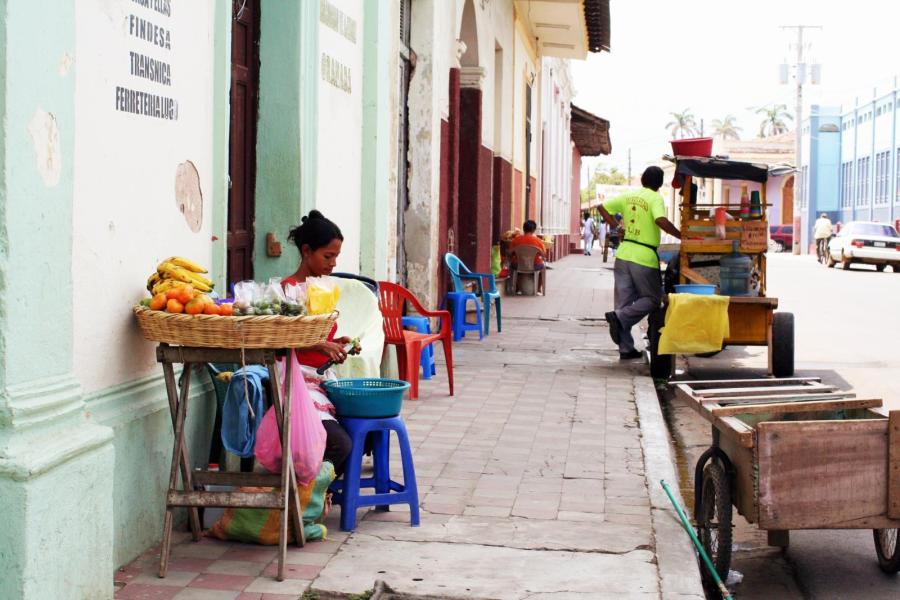Conflicts, like sagas, do not end quickly. They more often are punctuated by periodic successes or new challenges than by victory or defeat. Such is the story for some of Nicaragua's indigenous peoples. In its August 2001 decision in the Case of the Mayagna (Sumo) Awas Tingni Community v. Nicaragua, the Inter-American Court of Human Rights established a groundbreaking precedent for state recognition and protection of indigenous peoples’ rights to land and natural resources in accordance with their customary use and occupancy patterns. But the court also created the foundation for new disputes between the Awas Tingni community and the Nicaraguan government, and between the community and its indigenous neighbors.
In the lawsuit, the Awas Tingni community claimed that Nicaragua had violated its right to property by granting a logging company a permit to log within the community's traditional sacred lands. Relying on maps, ethnographic studies, and community members’ testimony, the community demonstrated to the court that it had used the disputed territories for hundreds of years. The court held that proof of traditional and habitual use of land is sufficient for indigenous communities lacking legal land titles to obtain national recognition of their property. It further held that Nicaragua not only must recognize the community's right to enjoy the benefits of its land, but must actively adopt measures to protect indigenous claims to land and natural resources. To fulfill this obligation, Nicaragua must now deal with numerous unresolved and overlapping claims. In large part the "overlaps," illustrated by a 1998 World Bank-commissioned study, reflect claims to, or aspirations for, access to forest-based natural resources.
The Awas Tingni community now faces two major challenges to the enjoyment of the rights they won in court: government intransigence, and competing interests from other indigenous communities whose traditional territories overlap with Awas Tingni territory. In Nicaragua, the Law of Demarcation, enacted as a result of the Awas Tingni case in January 2003, calls for the establishment of an arbitration mechanism to settle competing community land claims. The law also calls for a regional commission to intervene in instances of conflicting claims.1 The law does not, however, specify how the council will ensure dialogue among parties to a conflict, which is important given the structural asymmetries among indigenous groups that can impede fair dialogue between them when their interests conflict. Moreover, the government is doing little to enforce the law because it increases the power of formal regional political autonomy for Nicaragua's isolated and culturally distinct Atlantic Coast regions and undermines the national government’s interest in maintaining control over natural resources.
The roughly 11,000 Mayagna of Awas Tingni live in the isolated interior rain forests of Nicaragua's Atlantic Coast. This geography has led to lower educational levels and limited experience with national and international actors. The Mayagna’s indigenous Miskitu neighbors, by contrast, are highly educated (many have university degrees). Likewise, inhabiting the more urbanized coastal shores and littoral plains, the Miskitu have had a long history of contact with national and international actors. They see themselves as sophisticated, and act entrepreneurially. They occupy many local political and administrative positions, and, not surprisingly, regard the Mayagna (pejoratively referred to as the Sumo Indians) as primitive or, at best, “country bumpkins.” The Mayagna are fully aware of these sentiments and act accordingly. They are defensive and guarded in their relations with the Miskitu (Macdonald 1999).
Conflict management techniques that assume that the parties to a negotiation are social equals, or are willing to suspend their power imbalances in order to reach mutually agreeable solutions, do not work in cases like that between the Awas Tingni community and its neighbors. Ethnic distinctions, historical animosities, and social stigmas that favor the Miskitu have hindered the parties’ ability to negotiate openly. The Miskitu, because they regard the Awas Tingni community as inferior, are unwilling to negotiate directly with them. The Awas Tingni are as cautious and guarded with their Miskitu neighbors as they are with state actors. They are hesitant to make assertive demands to those they regard as their social betters.
Since state intransigence has undermined the legislated solutions to resolve the competing land claims, and structural asymmetries rule out traditional conflict resolution alternatives, what options remain? Some cases of conflict resolution from distant sites offer lessons for the Awas Tingni case.
Seri Indians of Mexico:The Involvement of Non-Neutral Mediators
One approach is to introduce a third party into the negotiation process that can dynamically position itself to interpret and manage potentially unfair or antagonistic interactions between indigenous communities. John Paul Lederach refers to such negotiators as “non-neutral third party mediators.”2 Not only can these third parties facilitate better communication between disputants, they also can divert blame, introduce new solutions, and increase interest in reaching a resolution by offering benefits to both parties. The powerful party knows that the negotiator is not necessarily going to defend the weaker party. The weaker party knows that it has a greater defense than it would entering the negotiation either directly or with a neutral negotiator. Both parties enjoy the advantages of a negotiator familiar with the conflict and its broader context.
The Seri Indians’ efforts to negotiate cooperative, sustainable fisheries management programs with the Mexican government illustrate how non-neutral mediators can help. Like the inter-community conflict in Nicaragua, the power asymmetries between the Seri Indians and the Mexican government are enormous, and there is little trust between them. In both countries the indigenous communities must operate within a legally decreed co-management regime in which the indigenous community and the state must work together to determine natural resource regulations.
Rather than relying on “neutral” mediation or arbitration, in Mexico a local non-governmental organization acted as a non-neutral third part to help the Mexican government and the Seri Indians negotiate better management and conservation of the Indians’ fisheries. The NGO, Comunidad y Biodiversidad (Community and Biodiversity, CoBi), had decades of experience working with the Seri Indians on their fishing practices, and an extended network of communications with universities, international organizations, and local and regional governments. “Unlike other organizations and individuals in the past, CoBi was not perceived as a threat or invasion to the community when its members started conducting biodiversity studies in the Infiernillo Channel,” said Xavier Basurto, a researcher from the University of Arizona. “This allowed CoBi to construct a good working relationship with the Seri government and tribe members, while gradually interweaving itself into the local system.”
Leveraging its expertise and trust with the Seri Indians, CoBi took a novel approach to local community negotiations: it entered each negotiation with the non-neutral goal of furthering coastal conservation while equalizing the voices of the Indians and the state at the negotiating table.
For this strategy to be successful in Nicaragua, an NGO with a comparable relationship of familiarity, trust, and knowledge of the local context would be needed. An alternative might be to use an existing NGO with local familiarity that can adjust its mission to also work on conflict negotiation between communies. But, as Basurto writes, “co-management processes and institutional change are measured in decades, not in years.” On Nicaragua's Atlantic Coast, events are moving too fast to wait that long.
Lobster Fisheries of Maine: The Promise of Local Co-Management
Another option draws from the experiences of self-managed common property regimes in the United States. In Capturing the Commons, James Acheson outlines the development of a successful co-management regime in the Maine lobster industry, an environment with surprising parallels to the Awas Tingni case. The Maine lobster industry, like the lands in dispute in the Awas Tingni case, previously was regulated by traditional practices and rules of custom, rather than an institutionalized system of regulations. Over time, however, increased lobster fishing competition led to systems of “rogue justice,” in which individual lobstermen sabotaged each others’ traps to limit competition.
Escalating tensions and competition for resources eventually led to the passage of the Zone Management Law (ZML) in 1995, which created a co-management regime that divided control over lobster fishing between the lobster industry, the Department of Marine Resources, and the state legislature (Acheson 97). This co-management system combines the enforcement powers of the state and federal governments with locally negotiated rules and decisions.
The locally made management system under the ZML has two decision-making tiers. At the most local level there are seven resource policy management zones. Each of these zones is managed by an elected council of community-based resource users who can propose rules limiting the types of activities and access to lobster fishing within their zones. Sitting above the local councils is the Lobster Advisory Council (LAC), created to address coordination among the local councils (Acheson 122). The LAC has two representatives from each zone and advises state officials who legitimize the decisions on regulations. The community thus frames state regulatory legislation.
A second lesson for the Awas Tingni case is that permeable boundaries are useful when irreconcilable differences exist over traditional-use boundaries. In Maine, fishermen from one zone may still fish in another, as long as they keep a minimum of 51 percent of their traps within their own zone. The law also created wide buffer area in which fishermen from zones with conflicting boundary claims can fish. Granting territorial claims to one community does not necessarily exclude other communities from mutually agreed upon access. Using similar “permeable” boundaries would be a long-term and flexible means of handling contested boundaries in Nicaragua.
The Awas Tingni story adds a new and essential layer of analysis for conflict management. Issues of trust posed by structural asymmetries between parties preclude many conventional conflict management methods. Considering and contextualizing conflict resolution strategies developed by communities in analogous situations, however, reveals potential solutions. Nevertheless, any and all such methods will remain little more than imaginative exercises until the Nicaraguan government formally validates local agreements and demonstrates compliance with court-mandated decisions. Otherwise local cooperation, however well designed and intentioned, will be rendered irrelevant along with the benefits bestowed on the Awas Tingni community by the Inter-American Court of Human Rights.
1. Specifically, the law creates two new institutions, the National Commission of Territorial Demarcation (CONADETI) and two regional Commissions of Territorial Demarcation (CIDT). When land conflicts arise, the corresponding CIDT is to arrange for dialogue between the conflicting parties and help them to negotiate a solution. If this fails, CONADETI is to be notified within 30 days and has the power to look into the case and issue a final decision to resolve the dispute.
2. It is particularly important that Lederach's prescription for non-neutral third parties is derived from his own fieldwork in Nicaragua. During the 1980s, Lederach, acting as a leader of the Moravian and Baptist church ministries in the region, was able to facilitate trust, dialogue, and negotiation between the Sandanistas, the Nicaraguan government, and various indigenous groups in the region over the course of three years. Lederach found that his position as a religious leader enabled him to engage the Nicaraguans in dialogue, rather than be perceived as an unaccepted outsider intruding on the situation.
Swati Mylavarapu is a student at Harvard University, where she is focusing her studies on human rights and international development. She was recently awarded a Rhodes Scholarship. Theodore Macdonald, Jr., is the associate director of the Program on Nonviolent Sanctions and Cultural Survival at Harvard University and a member of Cultural Survival’s Program Council.
References
Acheson, D. (2003). Capturing the Commons: Devising Institutions to Manage the Maine Lobster Industry. Hanover, New Hampshire: University Press of New England.
Acheson, J.M., and Brewer, J. (2000, May 31-June 4). Capturing the Commons: Social Changes in the Territorial System of the Maine Lobster Industry. Presented at Constituting the Commons: Crafting Sustainable Commons in the New Millenium, the Eighth Conference of the International Association for the Study of Common Property. Bloomington, Indiana.
Anaya, S.J. (2002). The Case of the Mayagna (Sumo) Awas Tingni Community v. Nicaragua. In The Arizona Journal of International and Comparative Law Online 19(1). http://www.law.arizona.edu/ depts/iplp/advocacy_clinical/awas_tingni/inter_american.htm.
Basurto, X., Bourillon, L., and Torre, J. (2000, May 31-June 4). The Role of a Non Governmental Organization (NGO) in a Co-Management Regime: The Mexican Seri Indians' Case of Study. Presented at Constituting the Commons: Crafting Sustainable Commons in the New Millennium, the Eighth Conference of the International Association for the Study of Common Property. Bloomingtion, Indiana.
Fisher, R., Ury, W. and Patton, B. (1983). Getting to Yes: Negotiating Agreement Without Giving In. New York: Penguin Books.
Lederach, J.P. (1989, April). Who Mediates in Developing Countries? Conflict Resolution Notes 6(4), pp 82-83.
Macdonald, T. (2003). Internationalizing Indigenous Community Land Rights: Nicaraguan Indians and the Inter-American Court of Human Rights.
Macdonald, T. (1999). Awas Tingni: Un estudio etnográfico de la comunidad y su territorio. Informe preparado por El Proyecto de Demarcación Territorial Awas Tingni.



